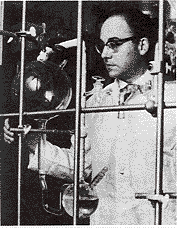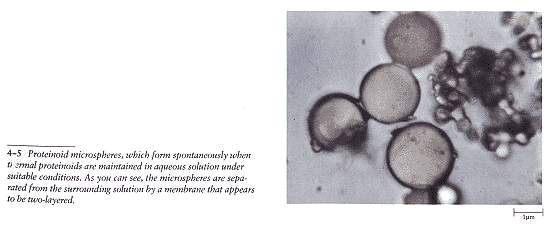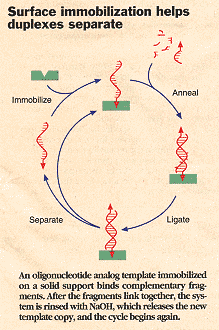
Initial optimism:
The Miller-Urey experiment is now recognized as the single most significant step in convincing many scientists that life is likely to be abundant in the cosmos.Carl Sagan, quoted in Origins: A Skeptic's Guide to the Creation of Life
on Earth. R. Shapiro
The Miller-Urey experiment assures us of what we had suspected for a long time: that one can bridge the gap between the inanimate and the animate and that the appearance of life is essentially an automatic biochemical development that comes along naturally when physical conditions are right.
Astronomer Harlow Shapley, to a televison audience, as quoted in Evolution after Darwin, S. Tax, ed, 1960.
Recent Criticisms:
Miller's experiment has hardly been improved upon. Even the simpler molecules are produced only in small amounts in realistic experiments siumulating possible primitive earth conditions. What is worse, these molecules are generally minor constituents of tars; it remains problematical how they could have been separated and purified through geochemical processes whose normal effects are to make organic mixtures more and more of a jumble.
A. G. Cairns-Smith, Seven Clues to the Origin of Life: A Scientific
Detective Story,pg 90.
In sum, the ease of synthesis of the 'molecules of life' has been greatly exaggerated. It only applies to a few of the simplest, and in no case is it at all easy to see how the molecules would have been sufficiently unencumbered by other irrelevent or interfering molecules to have allowed further organization to higher order structures of the kinds that would be needed.
A. G. Cairns-Smith, Seven Clues to the Origin of Life: A Scientific
Detective Story,pg 44.
"Many different forms of energy or radiation lead to organic compounds from such simple gas mixtures, including representatives of all the important types of molecules found in cells." That statement is simply incorrect.
R. Shapiro, Origins: A Skepticâs Guide to the Creation of Life on Earth,
pg 108.
But the expected rush of new developments has not been forthcoming. Rather, doubt has been cast on the basic premises, the reducing atmosphere and the prebiotic soup.
R. Shapiro, Origins: A Skeptic's Guide to the Creation of Life on Earth,
pg 278.
b) Proteinoid Microspheres
a) start with only protein-forming L amino acids
b) heat in N2 to form chains
c) dissolve in water and cool to precipitate aggregates

Proteinoid microspheres do the following:-make some kinds of chemical reactions go a little fasterProteinoid microspheres do not:
-are separated from their surrounding by a membrane-replicateInformation content = virtually zero (D. Kenyon)
-store and process energy
-store and process information
"[The proteinoid theory] has attracted a number of vehement critics, ranging from chemist Stanley Miller ... to Creationist Duane Gish. On perhaps no other point in origin-of-life theory could we find such harmony between evolutionists and Creationists as in opposing the relevance of the experiments of Sidney Fox."
R. Shapiro, Origins: A Skeptics guide to the Creation of Life on Earth, Summit Books,
New York, pg 192.
"These microspheres are not living cells. Their formation, however, suggests the kinds of processes that could have given rise to self-sustaining protein entities, separated from their environment and capable of carrying out the chemical reactions necessary to maintain their physical and chemical integrity."
Curtis and Barnes, Biology, pg 89.
